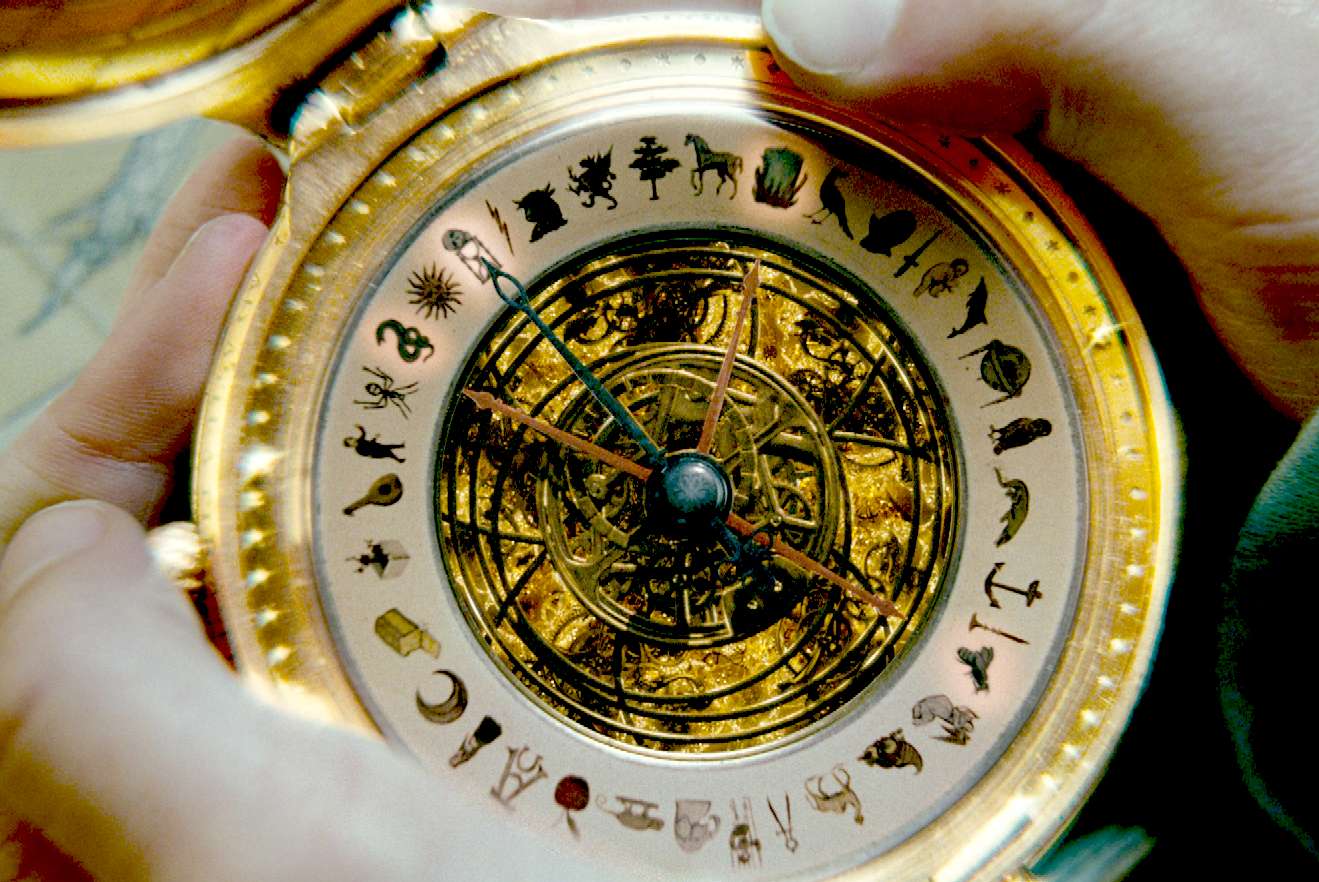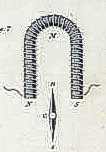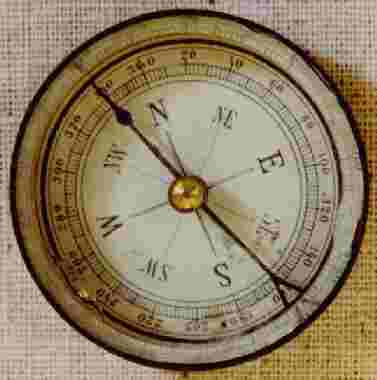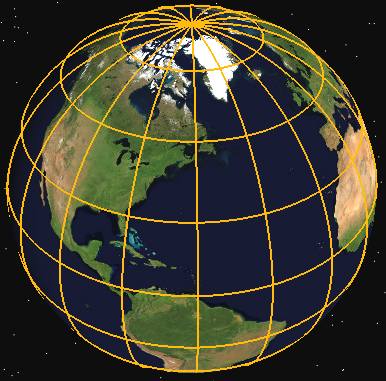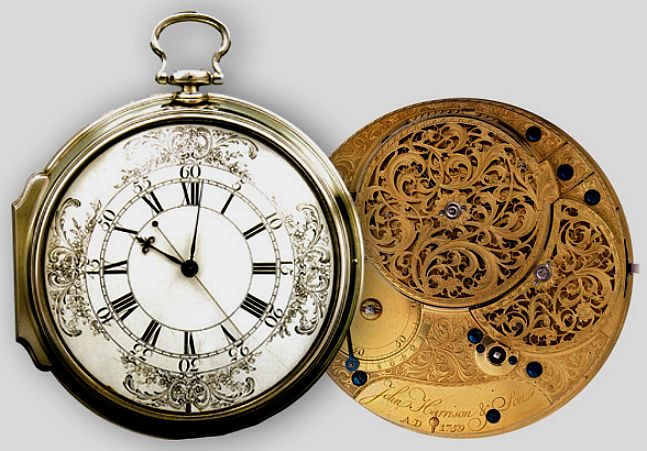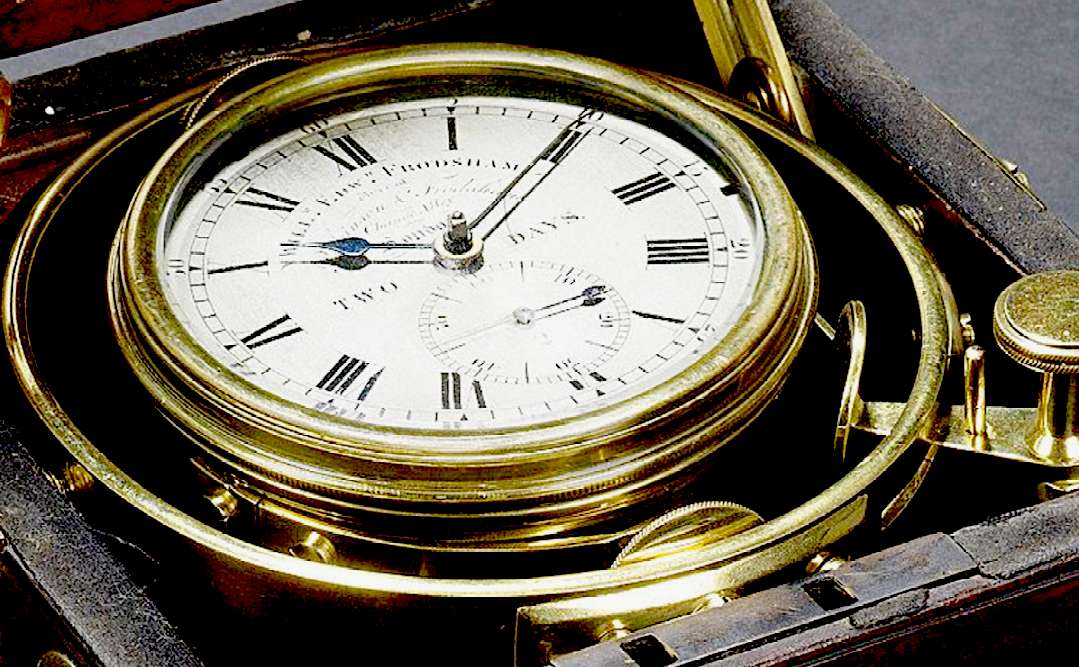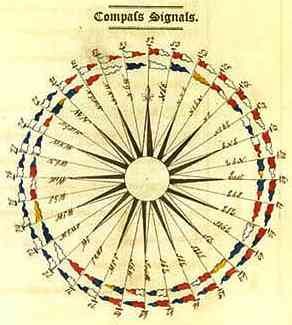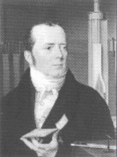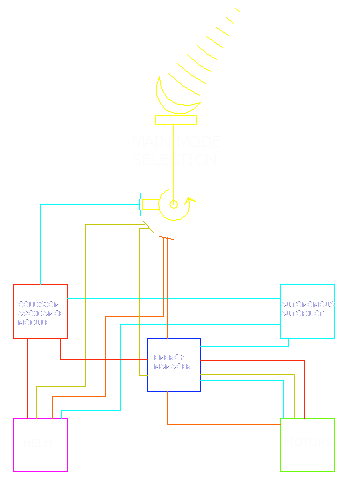|
THE MAGNETIC COMPASS - HISTORY
|
||
|
ALETHIOMETER
TRUTH COMPASS - Is a large compass-like pocket watch that reveals the truth.
This is a fictional device which appears in Philip Pullman’s fantasy series, His Dark Materials. The device bears a superficial resemblance to a compass, and is used to answer questions asked of it, albeit in a rather cryptic manner.
The Magnetic Compass is an essential guide for travelers despite GPS
Electromagnetic Compass
Eventually someone noticed that the lodestones were better at pointing out real directions and always pointed towards the bright north star, leading to the first compasses for reliable headings in transit. They designed the compass on a square slab which had markings for the cardinal points and the constellations. The pointing needle was a lodestone spoon-shaped device, with a handle that would always point south. Magnetized needles used as direction pointers instead of the spoon-shaped lodestones appeared in the 8th century AD, again in China, and between 850 and 1050 they seem to have become common as navigational devices on ships. The first person recorded to have used the compass as a navigational aid was Zheng He (1371-1435), from the Yunnan province in China, who made seven ocean voyages between 1405 and 1433.
Compasses were common devices for travelers because they were necessary and practical items. The design of the compass did not change much between the 1600’s and the 1800’s. The compass also was known as a surveying compass or instrument, which was made by some clock makers. The surveying compass was a solar compass, which was different from the magnetic compass. Some compasses were made with wooden supports at the bottom and brass fittings on top. As with many other articles the emigrants had with them, compasses were made in New England states such as Pennsylvania (Schiffer, 352). Compasses were also imported from France and Germany.
Pocket Compass
The magnetic compass is the oldest instrument for navigation and has been a vital tool for navigators at sea for centuries. The compass allows ships to steer a selected course. By taking bearings of visible objects with a compass, the navigator is also able to fix a ship's position on a chart.
Where was the compass first used?
The origin of the compass is shrouded in mystery. Certainly the Greeks knew about the attractive properties of magnetism in ancient times. Similarly, the Chinese were probably aware that an iron bar stroked with a lodestone acquired a directional north-south property as long as 2000 years ago. However, the precise date at which this knowledge was used to create the first magnetic compass is unknown. By the 10th century, the idea had been brought to Europe, probably from China, by Arab traders. Magnetic compasses of a very simple kind were certainly in use in the Mediterranean as early as the 12th century. However, early compasses were not very reliable. Although the magnetic compass was in general use in the Middle Ages, little was known about precisely how it worked.
How does a magnetic compass work?
A magnetic compass works because the Earth is like a giant magnet, surrounded by a huge magnetic field. The Earth has two magnetic poles which lie near the North and South poles. The magnetic field of the Earth causes a magnetized 'needle' of iron or steel to swing into a north-south position if it is hung from a thread, or if it is stuck through a straw or piece of wood floating in a bowl of water.
How were needles magnetized?
Needles were magnetized by stroking them with a lodestone, a lump of magnetic rock called magnetite. The needle did not keep its magnetism permanently, so a lodestone was carried on the ship so that the needle could be stroked whenever the magnetism wore off.
|
Compass movie trailer
Do iron ships pose particular problems for magnetic compasses?
Yes. The magnetic field of the iron body of the ship itself affects the reading on the compass.
When iron and steel ships became common, many scientists studied the problem. One of the earliest was the Astronomer Royal, Sir G.B. Airy, who in 1838 used the iron steamer Rainbow for his experiments. Airy thought of a method of neutralizing a ship's magnetism by placing magnets and pieces of unmagnetized iron near the compass.
Which other scientists successfully improved the compass?
Another problem was solved by a Scottish scientist of the 19th century, Sir William Thomson, who later became Lord Kelvin. He introduced a compass design with the needle system slung on fine silk threads through a very light skeleton card. The card was made of fine rice paper so that there was very little friction on the pivot. Jewels, such as agate and ruby, were used to reduce friction on the pivot itself.
It was also realised that compass movement could be dampened by filling the bowl with liquid. Alcohol is ideal for this since it only freezes at a very low temperature. Liquid compasses, because of their greater steadiness, are used in most ships, especially small boats and lifecraft.
How was the problem of magnetic variation solved?
Variations do not worry navigators now because of the introduction of the gyroscopic compass. It was invented in 1908. This uses a spinning gyroscope which keeps the compass pointing not to the magnetic north, but to Earth's true North. A rapidly spinning gyroscope is at the heart of the gyrocompass. Once the gyroscope is set spinning, it remains pointing in the same direction, regardless of the ship's heaving motion.
Today, a ship anywhere in the world can check its exact position by means of a signal from a satellite in orbit. However, all navigators still have a compass on board as well. Tracy Edwards, who captained the yacht Maiden in the 1989-90 Whitbread Round-the-World Yacht Race, used Navsat (satellite navigation) and found it had so many technical problems that she often used a magnetic compass instead.
See also Gyroscopes - Biography on the gyroscope compass inventor Elmer Sperry and the history of gyroscopes.
Magnets/Lodestones
Ferrites or magnetic oxides are stones that attract iron and other
metals. These are natural magnets and are not inventions. However, the
machines that we make with magnets are inventions.
Ferrites were first discovered thousands of year ago. Large deposits were found in the district of Magnesia in Asia Minor, giving the mineral's name of magnetite (Fe3O4).
Magnetite was nicknamed lodestone and used by early navigators to locate the magnetic North Pole. William Gilbert published De Magnete, a paper on magnetism in 1600, about the use and properties of Magnetite. In 1819, Hans Christian Oersted reported that when an electric current in a wire was applied to a magnetic compass needle, the magnet was affected - this is called electromagnetism.
In 1825, British inventor William Sturgeon (1783-1850) exhibited a device that laid the foundations for large-scale electronic communications: the electromagnet. Sturgeon displayed its power by lifting nine pounds with a seven-ounce piece of iron wrapped with wires through which the current of a single cell battery was sent.
JOHN HARRISON'S H4 - On its own a compass only gives you direction, but if you know how long you have traveled in one direction and at what speed, you will be able to say where you are on the earth, provided that you knew your starting position. To be able to work this out you need an accurate timepiece such as a marine chronometer.
In 1753, Harrison ordered a pocket watch from a London watchmaker. The watch was to be based on Harrison’s own design ideas. When he received the watch,
John realized that with certain improvements, it could become the timekeeping answer to the longitude problem. His
breakthrough discovery was that small, high-frequency oscillators (balance wheels) were much more stable during movement than
those of his larger clocks.
H4, just 13 centimeters in diameter, was the result of this realization. The improvements Harrison made included a balance wheel that was much larger than a typical pocket watch. It oscillated at a higher frequency, five times a second — a very modern 18,000 beats per hour. The watch contained a refined version of the temperature compensation Harrison had included in
his H3, and it contained a miniaturized remontoir.
The only problem was that H4 needed oiling. To help resolve this Harrison followed a relatively new practice in friction reduction and installed jeweled bearings in several places to minimize
friction and prolong instrument life.
H4 was completed in 1759. The Board of Longitude sent it on two official trials to the West Indies. The timekeeper performed flawlessly on both voyages, but the Board of Longitude was not satisfied. It took until 1765 for the Board to award Harrison half of the prize, and that was conditional upon Harrison’s full disclosure of construction details.
Following Harrison’s disclosures, the Board commissioned a copy of the watch to be made by Larcum Kendall. This watch, known today as K1, was tested on multiple voyages to the South
Pacific by none other than Captain James Cook. It too performed flawlessly, and two more were commissioned. One sailed on the Bounty with Captain William Bligh and ended up on Pitcairn Island, where it stayed until returned to the British government in 1840. The other also sailed with
Captain Cook on his third voyage to the South Pacific.
LINKS & REFERENCE
The Guardian films golden compass
https://en.wikipedia.org/wiki/The_Golden_Compass_%28film%29
http://www.theguardian.com/film/2013/nov/10/golden-compass-film-recap
Lodestones
Magnet
Basics
Magnetic
Fields: History
Electromagnetic
Basics
Early
Magnetism
Sketches
of a History of Classical Electromagnetism
Compass Signals
Until 1820, magnetism was that of iron magnets and "lodestones", natural magnets of iron-rich ore.
It was believed that the inside of the Earth was magnetized in the same fashion, and scientists were greatly puzzled when they found that the direction of the compass needle at any place slowly shifted, decade by decade, suggesting a slow variation of the Earth's magnetic field.
Hans Christian Oersted was a professor of science at Copenhagen University. In 1820 he arranged in his home a science demonstration to friends and students. He planned to demonstrate the heating of a wire by an electric current, and also to carry out demonstrations of magnetism, for which he provided a compass needle mounted on a wooden stand.
Hans Christian Oersted
While performing his electric demonstration, Oersted noted to his surprise that every time the electric current was switched on, the compass needle moved. He kept quiet and finished the demonstrations, but in the months that followed worked hard trying to make sense out of the new phenomenon. But he couldn't! The needle was neither attracted to the wire nor repelled from it. Instead, it tended to stand at right angles (see drawing below). In the end he published his findings (in Latin!) without any explanation.
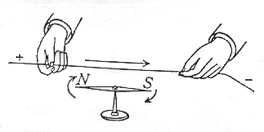
What Oersted saw
Andre-Marie Ampere in France felt that if a current in a wire exerted a magnetic force on a compass needle, two such wires also should interact magnetically. In a series of ingenious experiments he showed that this interaction was simple and fundamental--parallel (straight) currents attract, anti-parallel currents repel. The force between two long straight parallel currents was inversely proportional to the distance between them and proportional to the intensity of the current flowing in each.
(Only for those pursuing the math: this is not the basic force formula. Given two short parallel currents I1 and I2, flowing in wire segements of length L1 and L1 and separated by a distance R, the basic formula gives the force between them as proportional to
I1 I2 L1 L1/R2 )There thus existed two kinds of forces associated with electricity--electric and magnetic. In 1864 James Clerk Maxwell demonstrated a subtle connection between the two types of force, unexpectedly involving the velocity of light. From this connection sprang the idea that light was an electric phenomenon, the discovery of radio waves, the theory of relativity and a great deal of present-day physics.
VESSEL OPERATION MODE CIRCUIT SELECTIONS
COLLISION AVOIDANCE PROGRAM - FOR AUTONOMOUS SHIPS
FULLY COMPLIANT WITH COLREGS - THE INTELLIGENT COMPASS
CIRCUIT KEY:
Autonomous mode _______ select to engage fully automatic ship control
Manual mode _______ select this to allow an onboard crew to take control
Drone mode _______ selection for controlling the ship remotely via satellite
Collision avoidance ________ disengages autopilot when danger arises
TO REPEAT OERSTED'S EXPERIMENT :
You will need:
-
A pocket compass.
-
A one-foot (30 cm) length of fairly thick wire, insulated or bare.
-
A 1.5 volt electric cell ("battery") of size "D" or "C". The voltage is too low to cause any risk.
-
Lay the compass on a table, face upwards. Wait until it points north.
-
Lay the middle of the wire above the compass needle, also in the north-south direction (compare to the above image "What Oersted Saw"). Bend the ends of the wire so that they are close to each other.
-
Grab one end of the wire in one hand and press against one end of the battery.
-
Grab the other end with your other hand, and press momentarily against the other terminal of the battery. The needle will swing strongly by 90 degrees. Quickly disconnect (it is not good for the battery to draw such a large current). The needle will swing back to the north-south direction. Note that no iron is involved in producing the magnetic effect!
-
Repeat with the connections of the battery reversed. Note that the needle now swings 90 degrees in the opposite direction.
-
Take a piece of paper 2"x4" (5x10 centimeters) and fold the longer side into pleats, about 3/8" (1 centimeter) high. Put the wire on the table, its middle in the north south direction, put the pleated paper above it so that the wire is below one of the pleats, and place the compass on top of the pleats. (Or else, use a small block of wood, with a groove cut in its bottom for the wire.)
-
You can now repeat the experiment with the compass above the wire (if two people perform the experiment, they need no pleats or table--one can old the compass, the other the wire and battery). Note that the needle swings in the opposite direction than when the compass was below the wire.
-
The Holy Compass is a John Storm adventure
featuring the stunning Elizabeth Swan ship and all the crew
from previous adventures
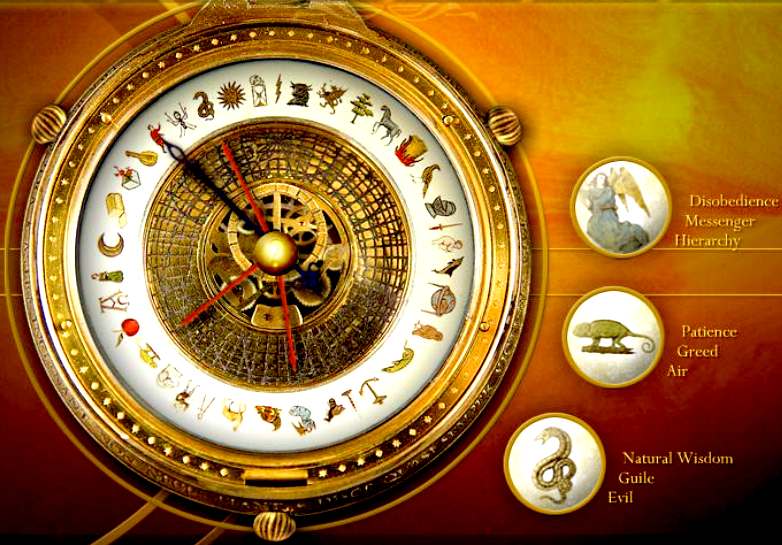
Magnetic Fields - History of Magnets and Electromagnetism True North, Magnetic North and Compass North - which way is really up? The History of Chinese Inventions The History Behind Musical Instruments - Inventors and Inventions GPS Navigational Aids
COMPASS DECK - The stand shown above is themed on a compass card and Nelson's column at Trafalgar Square in London.
This website is Copyright © 1999 & 2022 Max Energy Limited, an environmental educational charity working hard for world peace. The names Solar Navigator™, Miss Ocean™ and Utopia Tristar™ are trademarks. All other trademarks are hereby acknowledged.
